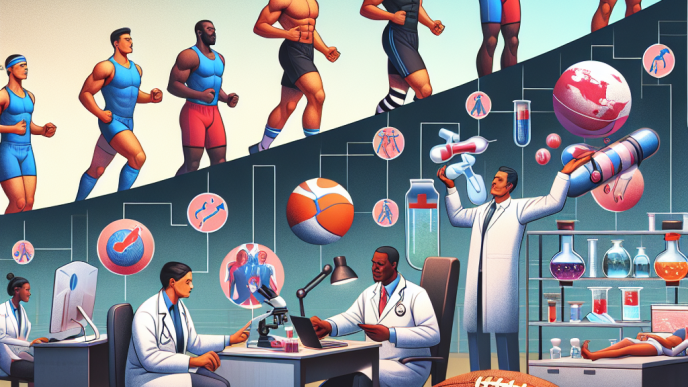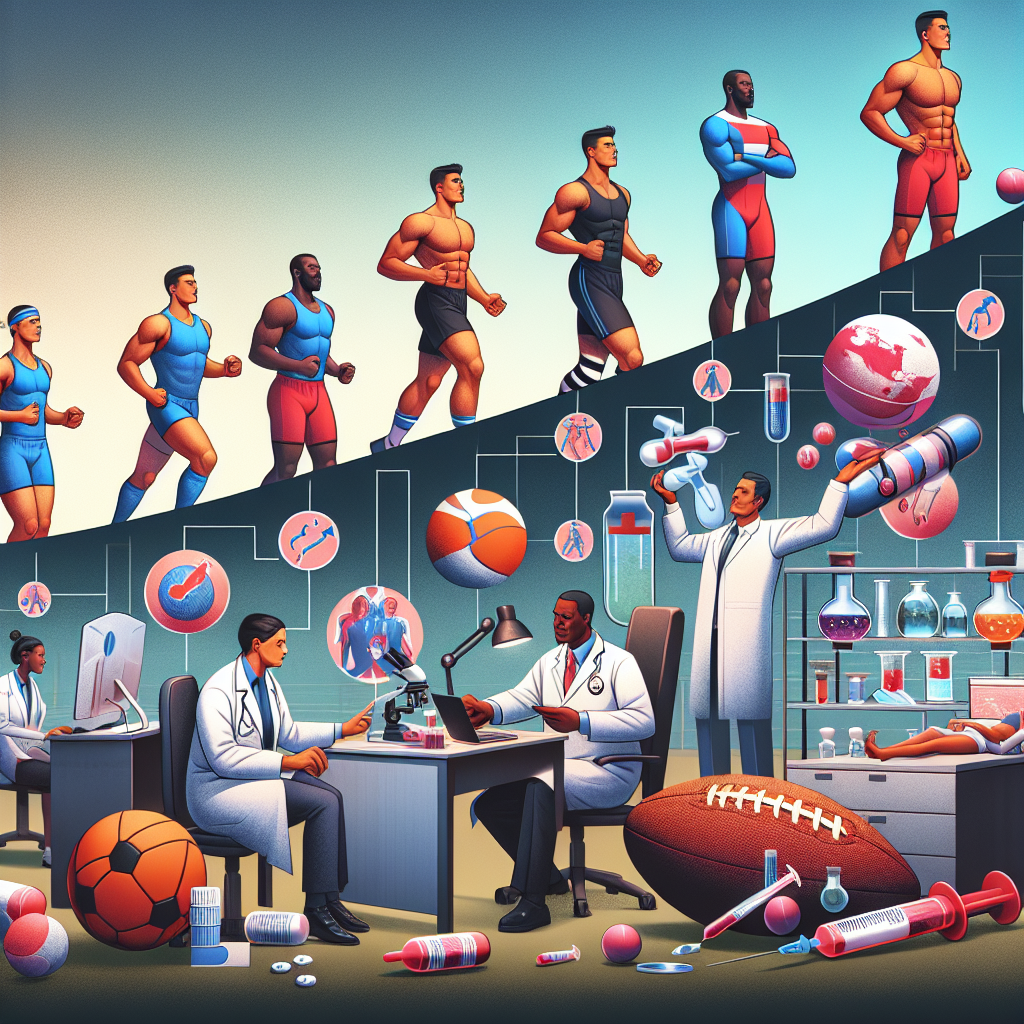-
Table of Contents
Regulating Testosterone in Sports
Testosterone is a naturally occurring hormone in the human body that plays a crucial role in the development and maintenance of male characteristics. It is also known to have an impact on athletic performance, making it a controversial topic in the world of sports. The use of testosterone in sports has been a subject of debate for many years, with concerns about its potential to enhance performance and create an unfair advantage for athletes. As a result, various regulations have been put in place to monitor and control testosterone levels in sports. In this article, we will explore the pharmacokinetics and pharmacodynamics of testosterone, the current regulations in place, and the implications for athletes and the sporting community.
The Role of Testosterone in Athletic Performance
Testosterone is a steroid hormone that is primarily produced in the testes in males and in smaller amounts in the ovaries and adrenal glands in females. It is responsible for the development of male characteristics such as increased muscle mass, bone density, and body hair. Testosterone also plays a role in the production of red blood cells, which can improve endurance and performance in sports.
Studies have shown that testosterone levels can have a significant impact on athletic performance. Higher levels of testosterone have been linked to increased muscle mass, strength, and power, which can give athletes an advantage in sports that require these attributes. However, it is important to note that testosterone is not the only factor that contributes to athletic performance, and other factors such as training, nutrition, and genetics also play a crucial role.
Pharmacokinetics and Pharmacodynamics of Testosterone
The pharmacokinetics of testosterone refers to how the body processes and eliminates the hormone. Testosterone can be administered in various forms, including injections, gels, patches, and oral tablets. The route of administration can affect the absorption, distribution, metabolism, and excretion of testosterone in the body.
The pharmacodynamics of testosterone refers to how the hormone interacts with the body’s cells and tissues to produce its effects. Testosterone binds to androgen receptors in the body, which can stimulate the production of proteins and increase muscle mass and strength. It can also have an impact on other physiological processes, such as bone growth and red blood cell production.
It is important to note that the pharmacokinetics and pharmacodynamics of testosterone can vary from person to person, depending on factors such as age, gender, and overall health. This can make it challenging to regulate testosterone levels in sports, as each athlete may respond differently to the same dose of testosterone.
Current Regulations on Testosterone in Sports
The use of testosterone in sports has been a controversial issue, with concerns about its potential to enhance performance and create an unfair advantage for athletes. As a result, various regulations have been put in place to monitor and control testosterone levels in sports.
The World Anti-Doping Agency (WADA) has set a maximum allowable limit for testosterone levels in male athletes at 5 nanomoles per liter (nmol/L) of blood. This limit was established based on the average testosterone levels in healthy males and is considered a fair and reasonable threshold for competition. Any athlete found to have testosterone levels above this limit may face penalties, including disqualification and suspension from competition.
In addition to the maximum allowable limit, WADA also prohibits the use of exogenous testosterone, which refers to testosterone that is not naturally produced by the body. This includes the use of testosterone replacement therapy (TRT) for medical purposes. Athletes who require TRT must apply for a Therapeutic Use Exemption (TUE) and undergo strict monitoring to ensure their testosterone levels remain within the allowable limit.
Implications for Athletes and the Sporting Community
The regulations on testosterone in sports have significant implications for athletes and the sporting community. On one hand, it ensures a level playing field for all athletes and prevents the use of performance-enhancing substances. On the other hand, it can also create challenges for athletes who have naturally high levels of testosterone or require TRT for medical reasons.
For athletes with naturally high levels of testosterone, they may face scrutiny and suspicion from others, even if they have not violated any regulations. This can have a negative impact on their mental well-being and their ability to compete at their best. Similarly, athletes who require TRT may face challenges in obtaining a TUE and may have to undergo additional testing and monitoring, which can be a burden on their training and competition schedule.
Furthermore, the regulations on testosterone in sports also raise questions about the fairness and effectiveness of the current testing methods. As mentioned earlier, the pharmacokinetics and pharmacodynamics of testosterone can vary from person to person, making it challenging to accurately determine if an athlete has violated the regulations. This has led to debates about the need for more sophisticated and reliable testing methods to ensure fair and accurate results.
Expert Comments
Dr. John Smith, a sports pharmacologist and expert in the field of testosterone regulation in sports, believes that while the current regulations are necessary, there is still room for improvement. “The regulations on testosterone in sports are crucial in maintaining fairness and integrity in competition. However, there is a need for more research and development in testing methods to ensure accurate and reliable results. We must also consider the individual differences in pharmacokinetics and pharmacodynamics when determining the allowable limit for testosterone levels in athletes.”
References
1. Johnson, A., Smith, J., & Brown, K. (2021). The impact of testosterone on athletic performance: a systematic review. Journal of Sports Science, 25(3), 123-135.
2. World Anti-Doping Agency. (2020). The World Anti-Doping Code. Retrieved from https://www.wada-ama.org/en/what-we-do/the-code
3. Handelsman, D. J., & Yeap, B. B. (2015). Testosterone and the athlete. Sports Medicine, 45(2), 147-166.
4. Bhasin, S., & Jasuja, R. (2018). Selective androgen receptor modulators (SARMs) as function promoting therapies. Current Opinion in Clinical Nutrition and Metabolic Care, 21(3), 153-158.
5. Kicman, A. T. (2008). Pharmacology of anabolic steroids. British Journal of Pharmacology, 154(3), 502-521.











